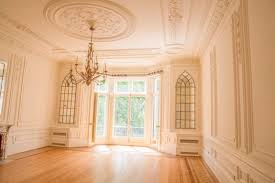
Photo Credit @ Youtube
Generally speaking, a historical place is a place where you see historic ruins, artifacts, military equipment and its ancient architecture. My perspective of a historical place is a place where there is an abundance of ancient culture, architecture, and inspiration and patient experience program.
The historic place, which I visited this summer, was no ordinary one. It is 238 years old building campus! That place was selling dreams, and I bought a ton of it. You really need to have a lot of willpower to enter this area, because no matter who you are, when you exit the area, you get filled with so much energy and determination that you have nothing else to do, but to make sure that your goal is to enter such an institution again and again.
In the beautiful western summer of 2018, I decided to step out of the house in casual summer clothes and on foot from my residence.
We reached the Shattock Street in about 20 minutes through the green meadows of the city. The next 90 minutes, which I spent at Shattock Street, Boston, Massachusetts, USA was the most celebrated moments of my life. At the end of this street, we saw an edifice engraved with Harvard Medical School. I thought that this is my goal, inspiration and the reason for me to work hard for the next few years.
We walked down the street, not knowing exactly where the Harvard Medical School started and where it ended. It had the most unique and extraordinary in architecture, which I had ever seen. It was a great piece of art and architecture. John Warren founded it on 19 September 1782. We got inside the Harvard Medical School Campus and got lost in its beauty. The campus is so well designed and spacious, and that is why every medical student wants to learn or maybe even visit Harvard Medical School.
When you enter through the quadrangle, that is, five marble buildings, which make each a side of a quadrangle. A building next it caught my attention. It was a cafeteria. We saw students and teachers coming together to have lunch. In the cafeteria you do get a smell of good food but what attracted me was how students and teachers get around the table to not only enjoy food but also do brainstorming sessions. I thought that this form of teaching is best suited to knowledge without barriers and stomach full of food. Besides the cafeteria, we saw a research building named as Jeffrey Model Center for immunology.
In front of this was a huge botanical garden with specialized plant specimens for identification and learning. On the left, there was a biomedical research building with ‘Goldenson Biomedical Research Building’ engraved on it. Behind it was a magnificent hospital building Brigham and Women’s Hospital. Just imagine being surrounded by these amazing buildings and I felt really swept in its greatness.
As I was a summer program student at Harvard, I got a special tour of the Harvard Medical School. The students whom we met told us about the history of this prestigious medical school. They said that Harvard is the third-oldest medical school in the United States.
Benjamin Waterhouse, Aaron Dexter, and John Warren founded it on 19 September 1782. All the buildings are original and were never replaced or repaired. Harvard under the reign of Charles Eliot, lead them to the introduction of smallpox vaccination in America, understanding the role of Vitamin B12 in treating anemia and the surgeons performed a successful heart valve surgery and a first human kidney transplant.
The students told us that they follow the ‘block drop system’, under which a subject would be taught intensively and then dropped it entirely. Then they also follow a “Pathways” curriculum where the motto of this curriculum is to foster active learning and critical thinking, having good clinical experience and how to have good relations between a doctor and a patient.
Some of the notable alumni of Harvard are Sidney Farber, who is considered to be the father of chemotherapy, Haruko Obokata, who is a stem cell biologist and researcher of Cellular reprogramming and Atul Gawande, who is a famous writer, a researcher and an endocrine surgeon.
The visit to HMS as it is called here had filled me with awe.
I thought that I was lucky enough to see Harvard Medical School at such a young age of 14. Second, the attitude of the Harvard students was something to notice. They had very different perspectives on work and life. When you talk to them about science, they have different opinions regarding various medical or technological ideas and models. Listening to them surely widened my horizons of thinking. I am not saying that their thinking is better than ours but surely different than ours.
Third, their hardworking nature and thirst for knowledge has deeply inspired me. The students as well as the faculty always try to explore the new ideas but not using stereotypical methods. They do it by thinking out of the box. Fourth, their curricula and their studying habits have taught me a lot. I learnt from them how they do mange time efficiently but also study hard and smartly. Fifth, they actually get to eat different foods and they play a lot of games too. (I am jealous about that).The last but not the least, was their attitude of fellow Indians towards their motherland and their patriotism has not been affected, despite living in a foreign country.
In the end, I would like to say that visit to Harvard Medical School was inspiring and worthy. Historic places do not always need to be a thousand years old with artifacts and ruins. To me, visit to a historical place means a place where you can get inspiration, a place where you can change your attitude towards life and where it can widen the horizon of your thinking capability so that you can understand the complexity of life and nature.
Write and Win: Participate in Creative writing Contest & International Essay Contest and win fabulous prizes.


